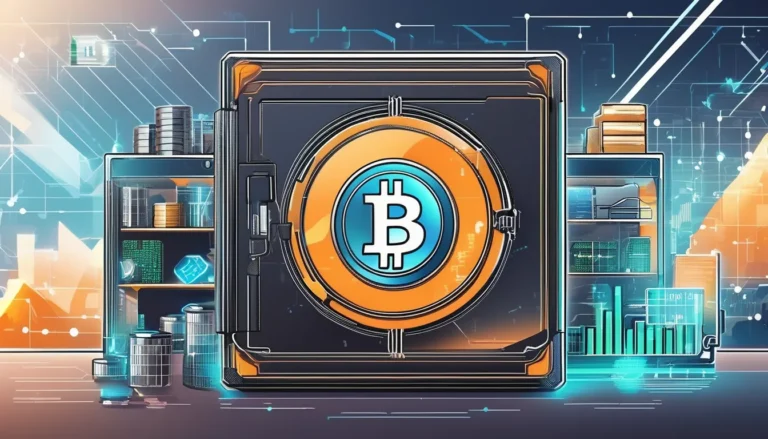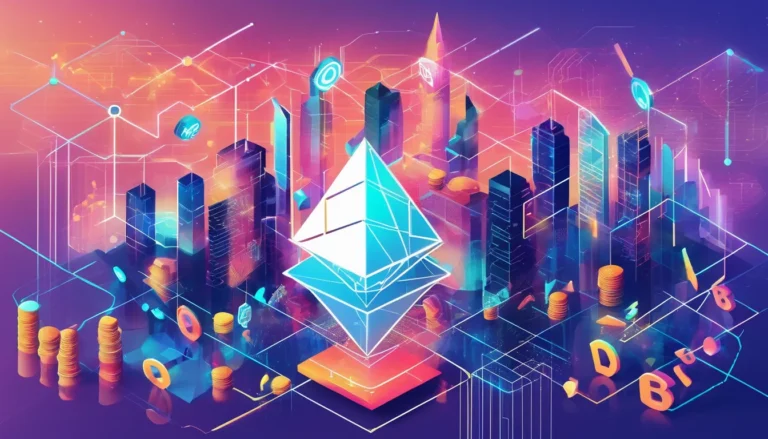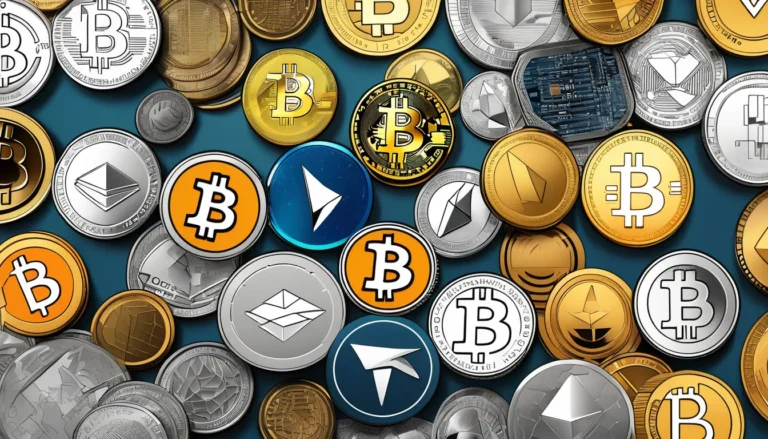NFTs in 2025: Are They Still Worth Investing In?

Non-fungible tokens (NFTs) have taken the world by storm over the past few years, revolutionizing the way we perceive ownership, art, and collectibles. In 2021, the NFT market reached an all-time high, with celebrities, artists, and brands jumping on the bandwagon. From digital artwork to virtual real estate, NFTs have captured the imagination of investors, but the market has not been without its volatility and skepticism. As we enter 2025, the question arises: Are NFTs still worth investing in?
In this article, we’ll delve into the evolution of NFTs, their current state, and whether or not they remain a viable investment option. We will also explore the factors influencing their future in the USA, providing you with a comprehensive view of NFTs in 2025.
What Are NFTs?
Before diving into the state of NFTs in 2025, it’s important to understand what they are. At their core, NFTs are digital assets that represent ownership of a unique item or piece of content, such as art, music, videos, and even virtual real estate. Unlike cryptocurrencies such as Bitcoin or Ethereum, which are fungible and can be exchanged for one another, NFTs are non-fungible, meaning they are one-of-a-kind and cannot be exchanged on a like-for-like basis.
NFTs are typically built on blockchain technology, with Ethereum being the most widely used blockchain for minting and trading them. Each NFT contains metadata and a unique identifier that makes it distinct from other tokens, which is what gives them value. The ownership and transaction history of NFTs are recorded on the blockchain, ensuring transparency and authenticity.
The Rise and Fall of NFTs
The NFT craze reached its peak in 2021, with some high-profile sales and celebrity endorsements making headlines. Digital artist Beeple’s artwork, “Everydays: The First 5000 Days,” sold for $69 million at Christie’s auction house, cementing NFTs as a legitimate art form. Other celebrities, such as Snoop Dogg, Eminem, and Paris Hilton, jumped on the NFT bandwagon, further boosting their popularity.
However, as with any rapidly growing market, the NFT space experienced volatility. By 2022 and 2023, the initial excitement began to wane, and many investors started to question the long-term value of NFTs. The market saw a decline in sales and prices, and the speculative nature of many NFT purchases raised concerns about their sustainability.
Despite the downturn, some see NFTs as an evolving technology with long-term potential. The question now is: where do NFTs stand in 2025, and are they still worth investing in?
The NFT Market in 2025
By 2025, the NFT market has matured significantly. While the speculative bubble of 2021 may have burst, NFTs have found their place in a more diversified ecosystem. Several key trends have emerged that are reshaping the NFT landscape, particularly in the United States.
1. Utility and Practical Use Cases
In the early days, NFTs were primarily associated with digital art and collectibles. However, as the market has matured, new use cases for NFTs have emerged, making them more practical and valuable for investors. One of the most promising developments is the integration of NFTs with real-world assets.
For example, NFTs are being used to represent ownership of physical assets such as real estate, luxury goods, and even shares in companies. In the real estate sector, NFTs are being used to tokenize properties, allowing for fractional ownership and easy transfer of assets. This trend could open up new investment opportunities for everyday Americans who may not have had access to traditional real estate markets.
In the entertainment industry, NFTs are being used to create new revenue streams for artists. Musicians, filmmakers, and other creators are issuing NFTs that offer fans exclusive access to content, merchandise, or experiences. For instance, an artist could release an NFT that grants holders exclusive access to a virtual concert or behind-the-scenes footage. This model is gaining traction as a way to bypass traditional intermediaries and connect directly with fans.
2. The Evolution of Metaverse and Virtual Real Estate
The concept of the metaverse, a digital universe where users can interact with virtual environments and assets, has gained significant traction in recent years. NFTs play a critical role in this new virtual world, as they are used to represent ownership of virtual assets such as land, clothing, and items within metaverse platforms.
Virtual real estate, in particular, has become a hot commodity. Platforms like Decentraland and The Sandbox allow users to buy, sell, and trade virtual land using NFTs. In 2025, virtual real estate is no longer a speculative investment but a legitimate part of the digital economy, with businesses and individuals alike establishing a presence in the metaverse.
While virtual real estate is still a relatively niche market, its potential for growth in the coming years is significant. As more people spend time in virtual environments, the demand for digital properties and assets is expected to rise. Investors who are looking for long-term opportunities may find value in virtual land and other metaverse-related NFTs.
3. Environmental and Ethical Considerations
One of the criticisms of NFTs has been their environmental impact. The energy consumption required for minting and trading NFTs, particularly on the Ethereum blockchain, has raised concerns about the carbon footprint of the industry. In response, several NFT projects and platforms have begun transitioning to more energy-efficient blockchains, such as those that use proof-of-stake (PoS) mechanisms rather than proof-of-work (PoW), which is more energy-intensive.
Additionally, there has been an increased focus on the ethical implications of NFTs, particularly in terms of copyright infringement and plagiarism. In 2025, more robust systems are in place to verify the authenticity and ownership of NFTs, ensuring that creators receive fair compensation for their work. Platforms are also implementing stricter guidelines to prevent the minting of stolen or plagiarized content.
4. NFT Regulation and Legal Frameworks
As the NFT market matures, regulatory bodies are taking a closer look at how to govern this rapidly evolving space. In the USA, the Securities and Exchange Commission (SEC) has begun exploring the possibility of regulating NFTs as securities, particularly in cases where they represent investment contracts or offer financial returns.
While regulatory uncertainty remains, the introduction of clear legal frameworks will likely have a positive impact on the NFT market in 2025. Investors will have more clarity on the legal aspects of buying, selling, and owning NFTs, which will help build trust and confidence in the market.
Are NFTs Still Worth Investing In?
So, with all these developments, the burning question remains: are NFTs still worth investing in?
The answer depends on several factors, including your risk tolerance, investment goals, and understanding of the evolving NFT ecosystem.
1. Long-Term Investment vs. Speculative Trading
NFTs are no longer just speculative assets. While there are still opportunities for quick profits through flipping high-demand NFTs, the market is shifting towards more long-term investments. As NFTs become integrated into various industries and use cases, they offer more practical value than in the past. If you’re considering NFTs as a long-term investment, it’s important to look at projects that offer real utility, such as virtual real estate, tokenized assets, and exclusive creator access.
2. Diversification
NFTs should not be viewed as a standalone investment strategy. As with any asset class, diversification is key to managing risk. In 2025, NFTs are likely to be part of a diversified portfolio that includes traditional investments like stocks and bonds, as well as emerging technologies like cryptocurrency and blockchain-based assets.
3. Understanding the Technology
Investors who are successful in the NFT market will have a strong understanding of the underlying technology. Blockchain technology, digital ownership, and the mechanics of NFTs are complex, and investors who can navigate these complexities will be better positioned to identify valuable opportunities. It’s also important to stay up to date with developments in the NFT space, as the market is continually evolving.
Conclusion
NFTs in 2025 are no longer just a passing trend but a significant part of the digital economy. While the speculative bubble of 2021 may have burst, NFTs have found their place in a more sustainable ecosystem. With new use cases, integration with the metaverse, and improvements in environmental sustainability and regulation, NFTs are evolving into practical and valuable assets.
For investors in the USA, NFTs can still be a worthwhile investment, but they should be approached with caution and a long-term perspective. Understanding the technology, exploring real utility in NFTs, and diversifying your portfolio are all key to making informed investment decisions in this space.
In conclusion, while NFTs may not be the “get-rich-quick” scheme they once appeared to be, they remain an exciting and evolving asset class with significant potential for those who are willing to engage with the technology and its broader applications. Whether you are a seasoned investor or a newcomer to the world of NFTs, the market in 2025 is filled with opportunities for those who approach it thoughtfully and strategically.




